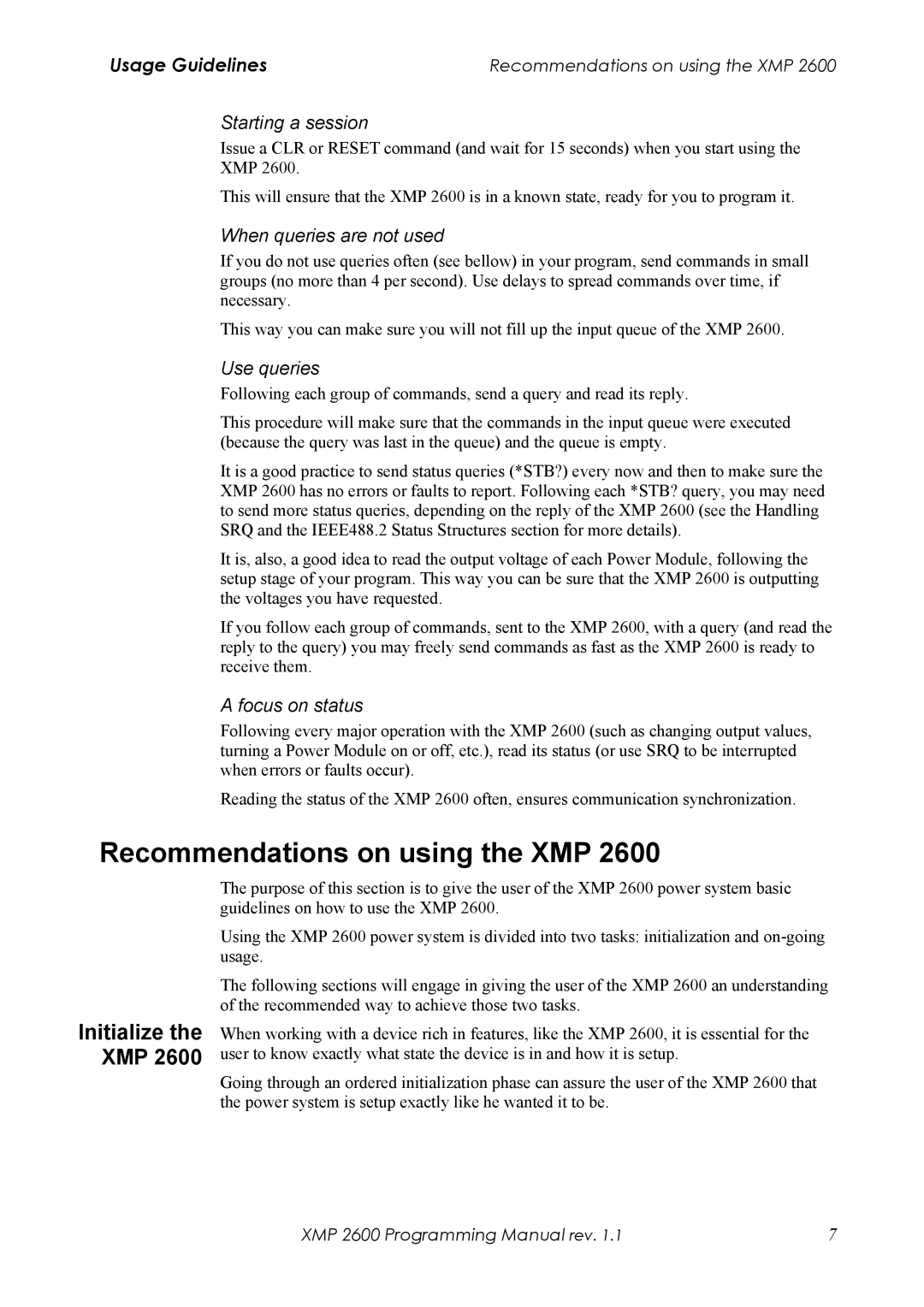Usage Guidelines | Recommendations on using the XMP 2600 |
Starting a session
Issue a CLR or RESET command (and wait for 15 seconds) when you start using the XMP 2600.
This will ensure that the XMP 2600 is in a known state, ready for you to program it.
When queries are not used
If you do not use queries often (see bellow) in your program, send commands in small groups (no more than 4 per second). Use delays to spread commands over time, if necessary.
This way you can make sure you will not fill up the input queue of the XMP 2600.
Use queries
Following each group of commands, send a query and read its reply.
This procedure will make sure that the commands in the input queue were executed (because the query was last in the queue) and the queue is empty.
It is a good practice to send status queries (*STB?) every now and then to make sure the XMP 2600 has no errors or faults to report. Following each *STB? query, you may need to send more status queries, depending on the reply of the XMP 2600 (see the Handling SRQ and the IEEE488.2 Status Structures section for more details).
It is, also, a good idea to read the output voltage of each Power Module, following the setup stage of your program. This way you can be sure that the XMP 2600 is outputting the voltages you have requested.
If you follow each group of commands, sent to the XMP 2600, with a query (and read the reply to the query) you may freely send commands as fast as the XMP 2600 is ready to receive them.
A focus on status
Following every major operation with the XMP 2600 (such as changing output values, turning a Power Module on or off, etc.), read its status (or use SRQ to be interrupted when errors or faults occur).
Reading the status of the XMP 2600 often, ensures communication synchronization.
Recommendations on using the XMP 2600
Initialize the XMP 2600
The purpose of this section is to give the user of the XMP 2600 power system basic guidelines on how to use the XMP 2600.
Using the XMP 2600 power system is divided into two tasks: initialization and
The following sections will engage in giving the user of the XMP 2600 an understanding of the recommended way to achieve those two tasks.
When working with a device rich in features, like the XMP 2600, it is essential for the user to know exactly what state the device is in and how it is setup.
Going through an ordered initialization phase can assure the user of the XMP 2600 that the power system is setup exactly like he wanted it to be.
XMP 2600 Programming Manual rev. 1.1 | 7 |
